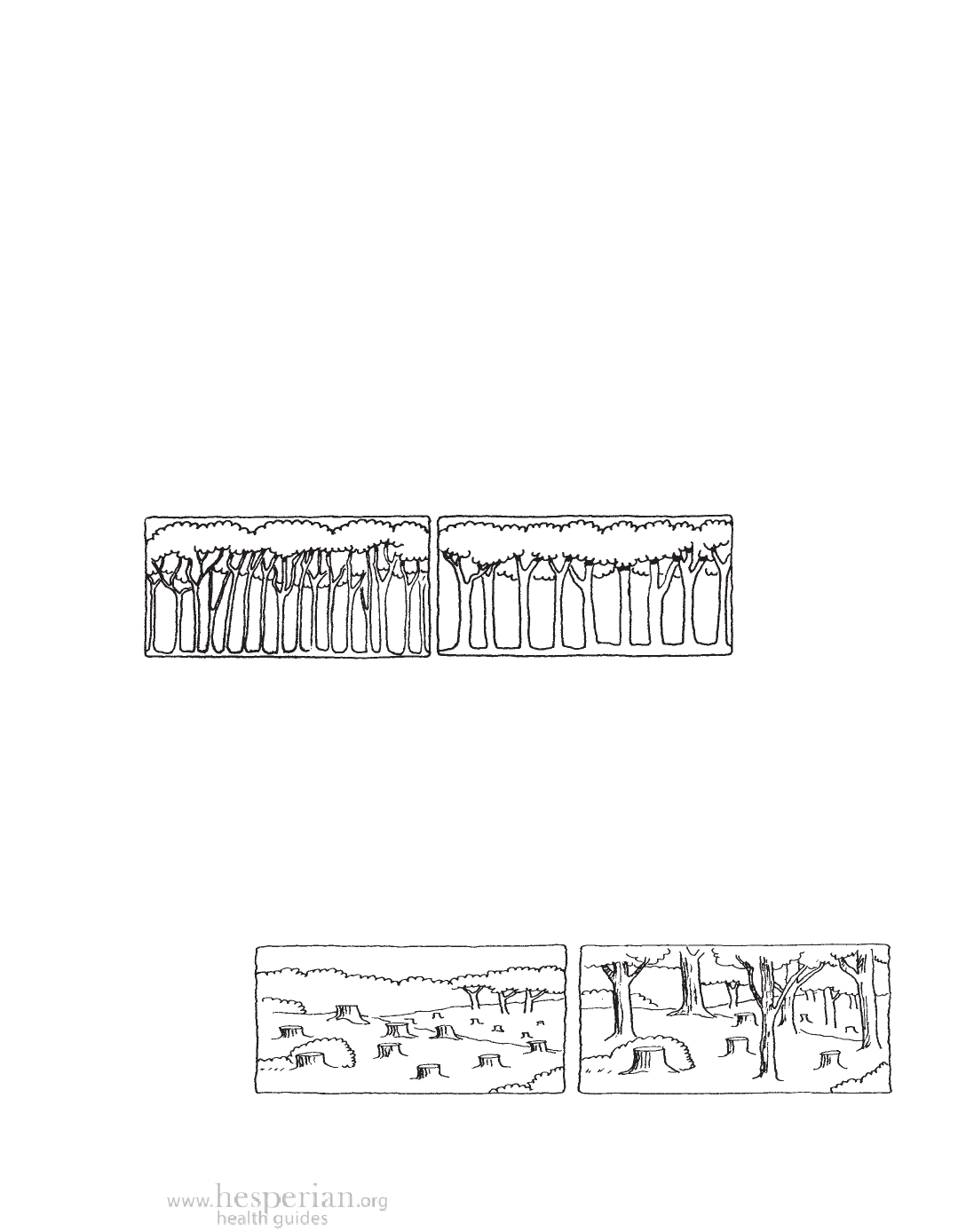
Sustainable Use of Forests 189
Sustainable Use of Forests
Sustainable forest management means using and caring for forests in ways
that meet daily needs while protecting the forests for the future. Sustainable
methods are not the same everywhere. Each community needs to find what
works best for them and for their forest.
Making a sustainable forest management plan helps a community decide
how best to use their forest. It can also help resist threats to the forest by
industry or the government. Sometimes, you can get a better price for forest
products if you can show they were produced sustainably. But the most
important part of a sustainable forest management plan is that it helps local
people work together to use and protect forests.
Some ways to both use and protect the forest at the same time include:
• Thinning vines, plants, and trees allows more sunlight into the forest, so
that the plants you want can grow.
Thinning trees
means cutting
certain trees
so the ones
that remain
grow wider
and healthier.
• Enrichment planting means planting new trees or plants under older trees
or in small clearings when they do not grow back by themselves.
• Replanting after cutting is a way to make sure there will be new trees and
seeds to replace the ones that were cut.
• Controlled burning can reduce brush that grows under trees. This releases
nutrients into the soil, and kills pests that might hurt the trees. Controlled
burns need careful planning because fires can easily burn out of control.
• Selective logging means cutting only some trees, while saving young trees
and some healthy older trees to hold soil and provide seed for the future.
Selective
logging protects
some trees
for the future,
allowing forests
to continue
growing.
A Community Guide to Environmental Health 2012